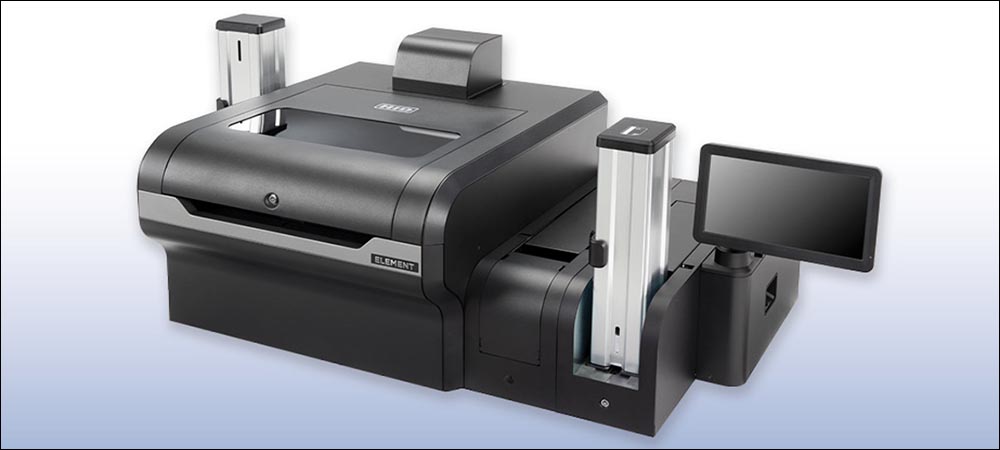Presented here are recent news announcements regarding the following organizations: SML, HID Global, IntelliGuard, SCA Pharma, Kit Check, Sewio, Fluke, Everactive, and the Industrial Internet Consortium.
SML Launches New RFID Inlay for Retail Apparel
SML Group has announced the release of its GB25U8 RFID inlay. The inlay, designed for the apparel retail industry, is equipped with a Ucode 8 RFID chip from NXP Semiconductors. The GB25U8 is available in various formats, including dry, wet, paperface and hangtag, and is compliant with GS1‘s EPC RFID Gen2v2 standard. It supports the global UHF RFID frequencies and meets Auburn University‘s RFID Retailer Performance Specifications, including Specs A, B, C, D, F, G, H, I, K, L, M, N, Q, W1, W2, W3, W4, W5 and W6.
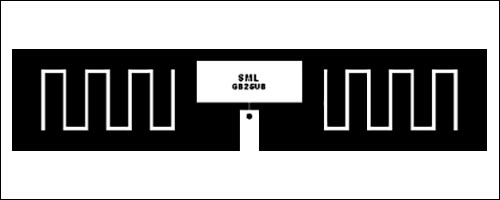
According to SML, the inlay can be implemented in a majority of tagged products by retailers using RFID solutions to improve inventory accuracy, enabling them to improve the consistency and speed of stock counts. Measuring 70 millimeters by 15 millimeters (2.8 inches by 0.6 inch), the GB25U8 inlay has passed all active categories, including F, I, H, and the Ws. As a result, the company reports, the inlay is suitable for omnichannel retailers to deploy throughout their stores and supply chains. In addition to supporting apparel, footwear and home products, the tag can be used to manage other items, including cosmetics, wine and spirits, pharmaceuticals and food. Its antenna design provides both strong forward sensitivity and reverse backscatter signal, according to the company.
“Our global technology team at SML is working tirelessly to set benchmarks in RFID tag and software technology,” said Dean Frew, SML’s CTO and senior VP of RFID solutions, in a prepared statement, “so that our retail and brand owner customers who are working just as hard to transform their operations using RFID While other companies may design an inlay using the NXP Ucode 8, SML has achieved a step-function change in performance with its innovative antenna that delivers faster encoding speeds and more accurate stock counts in store and supply chain environments.”
HID Global Unveils Industrial, Financial Card-Printing Products
HID Global, a provider of trusted-identity solutions, has unveiled its HID ELEMENT product line, a heavy-duty, fully modular desktop-based card-personalization portfolio for mid-range and high-volume market segments. The portfolio’s card-production capabilities and flexible system architecture allow organizations to create custom secure ID and financial card-production solutions for a variety of use cases and applications, the company reports.
“From government entities to financial card issuers and service bureaus, customers around the world have unique card personalization and issuance requirements where traditional direct-to-card printers and large production machines may be too cost- or space-prohibitive,” said Craig Sandness, HID’s VP and managing director of secure issuance, in a prepared statement. “By bridging the gap between desktop printers and central issuance machines, our HID ELEMENT product line pioneers a new approach for delivering a host of highly configurable options that address current and evolving customer challenges.”
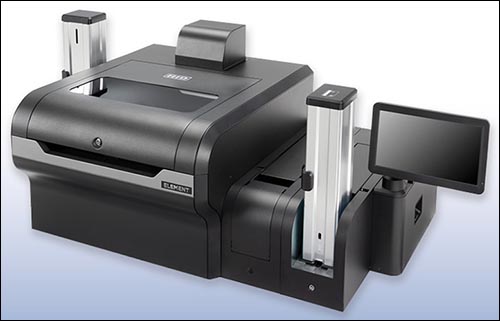
The portfolio enables card personalization and accommodates projects requiring high-resolution UV ink printing, laser engraving or both. Designed to serve government and financial institutions, as well as medium-to-large enterprise corporations and service bureaus, the products are intended to address the demand for greater print speed, higher resolution and larger card output.
Precision UV-cured, drop-on-demand inkjet card printing options span full-color over-the-edge or monochrome text and graphics printing, with up to six configurable ink channels. Users have options for custom colors, fluorescents and color tactile effects. Laser engraving for tamper-proof, high-durability card personalization provides secure sub-surface or tactile effect black markings and precise greyscale imaging in a laser engraving-only system, or combined with a color UV ink module.
Card-encoding options include HID OMNIKEY or third-party (Smartware) contact and contactless reader and programmer functionality and magstripe support. Lenticular personalization includes multiple/changeable laser image (MLI/CLI) engraved images or data shift with viewing angle for convenient authentication. Optional modules include an additional input-output card hopper for a capacity of up to 1,600 cards, as well as a camera system for registration and verification.
IntelliGuard Intros RFID-IoT Inventory-Management Solution
IntelliGuard, a provider of RFID medication-management technologies, has announced the release of its Vendor Managed Inventory solution. The cloud-based platform offers Internet of Things (IoT) capabilities and real-time track-and-trace functionality for medication inventory dispensing and replenishment.
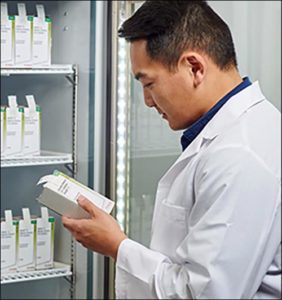
Managing the medication supply chain has become a top priority for most hospitals during the COVID-19 pandemic. The Vendor Managed Inventory solution enables medical facilities to reduce stockouts and shortages, the company reports. The platform connects distributors with customers, enabling both parties to manage drugs accurately from distribution to the point of care. Healthcare providers and distributors can thus confirm which critical medicines are available and where they are located.
“IntelliGuard is committed to being ahead of the curve and making sure we are providing our customers with the latest technology,” said Gordon Krass, the company’s CEO and president, in a prepared statement. “We launched our next generation cloud-based vendor managed inventory product because for healthcare professionals, every minute counts. In these unprecedented times, IntelliGuard will help secure the relationship between our distributors and their clients so that critical products will be there when the customer needs them.”
SCA Pharma Adds Kit Check Embedded RFID Tags to Its Products
Kit Check, a provider of automated medication-management solutions, has signed an agreement to allow SCA Pharma to add embedded RFID tags to all of its products. SCA Pharma, an FDA-registered 503B entity, will be the first 503B partner to utilize Kit Check’s tunnel-association technology and register all drugs in the cloud-based registry.
With Kit Check’s technology, SCA Pharma says it hopes to offer solutions that can improve the efficiency and accuracy of hospitals’ OR medication-tracking processes. SCA’s products will be combined with Kit Check’s RFID-tagging technology. According to the company, all SCA offerings will be deployable out of the box, with the embedded RFID tags conserving room in OR trays.
“Over the years we’ve been working together, Kit Check’s technology has allowed us to provide customers with stronger, safer products,” said Milton Boyer, SCA Pharma’s CEO, in a prepared statement. “With the implementation of RFID-tracking tags on all SCA Pharma products, our customers will have even more confidence in their overall OR medication tracking processes and can be sure that any potential diversion attempts will be halted at the first sign of abnormality.”
Kit Check provides RFID-based medication inventory tracking and automated tray processing to more than 500 hospitals throughout the United States and Canada. SCA Pharma, a supplier of sterile compounding, is certified by DoseID, an RFID certification body for the pharmaceutical industry (see Consortium Aims to Standardize RFID for Pharmaceuticals). Kit Check’s tunnel-association technology registers important item-level data for each unit of medication at the point of production, creating a record for that product’s dynamic lifecycle. Both Kit Check and SCA are members of DoseID.
“As hospitals navigate this busy, uncertain time, it’s become increasingly important for them to acquire medication intelligence capabilities,” said Kevin MacDonald, Kit Check’s CEO and co-founder, in the prepared statement. “SCA Pharma’s decision to upgrade their RFID tracking technology will continue to help hospitals keep their drugs safe, furthering Kit Check’s mission of diminishing the issue of drug diversion within the medical space and in our local communities.”
Sewio Promotes UWB Tech with Free RTLS Enablement Kits
Sewio, a UWB-based real-time location system (RTLS) vendor, has announced that it is giving away three Digital Hero Enablement Kits (each worth $4,532) in order to promote the advantages of ultra-wideband (UWB) technology. The company is offering a chance to win a free kit by answering two questions. The contest was launched on Sep. 7, and the winners will be selected on Oct. 31 based on their answers to the questions. To enter the contest, click here.
The Digital Hero Enablement Kit includes UWB RTLS hardware and software, as well as three hours of consulting with Sewio’s customer experience team. The kit offers companies hands-on experience with Sewio’s RTLS, and to test the UWB technology that Apple recently added to its iPhones. The UWB-based RTLS for indoor location tracking is designed for companies in the intralogistics, retail, sports, entertainment and livestock industries. The system comes with the company’s RTLS Studio remote-management and visualization software.
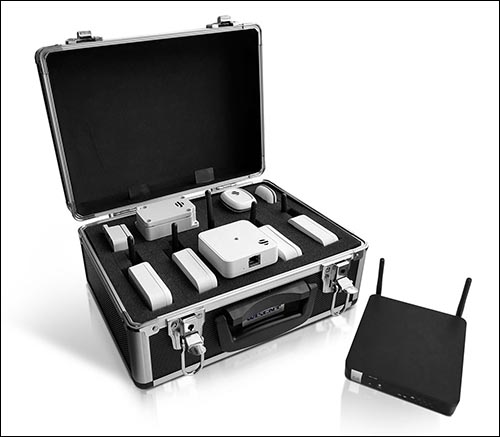
“We are thrilled to be opening up the very real benefits that ultrawideband technology delivers to companies by offering these three Digital Hero Enablement Kits,” said Petr Passinger, Sewio’s CMO, in a prepared statement. “The ability to precisely track materials, goods and personnel not only helps optimize workflows, processes and logistics by reducing significant costs and wasted manhours, but it provides a valuable lifeline to ensure staff are not only accounted for should a serious incident occur, as well as helping prevent staff and site visitors alike from entering into dangerous or restricted zones.”
“In the current pandemic climate,” Passinger added, “we have seen that the adoption of digital transformation has proved to be a major key to futureproofing companies’ survival. By leveraging this technology, businesses can ensure they hit the ground running when the threat of COVID-19 has diminished and take advantage of the serious competitive edge that accurate and reliable indoor tracking provides.”
Fluke Invests in Everactive to Accelerate IIoT Solutions Growth
Fluke has recently led an investment in Everactive, a Silicon Valley-based technology firm that sells batteryless, wireless Industrial Internet of Things (IIoT) solutions. Everactive will raise up to $35 million as part of its Series C funding round. Everactive, which spun out of the University of Michigan and the University of Virginia in 2012, develops self-powered industrial-monitoring systems.
Everactive’s proprietary ultra-low-power semiconductors require 1,000 times less power than competing circuits, the company claims. Its sensors generate power from small amounts of harvested energy to continuously measure, process, and wirelessly transmit equipment and infrastructure health data from industrial assets. Removing the need for batteries and accompanying maintenance facilitates rapid scale-up, according to the company, enabling users to accelerate digital-transformation initiatives throughout the industrial sector.
“Everactive’s breakthrough technology enables the ability to scale beyond anything we have previously seen in the IIoT industry,” said Marc Tremblay, Fluke’s president, in a prepared statement. “We look forward to working with the Everactive team to define new industrial monitoring solutions that unlock a superior value proposition for our customers.” As part of the investment, Tremblay will assume a seat on Everactive’s Board of Directors.
Industrial Internet Consortium Updates IoT Vocabulary Terms
The Industrial Internet Consortium (IIC) has announced V2.3 of its Industrial Internet Vocabulary Technical Report, one of six IIC technical reports that serve as industry guidelines on vocabulary, architectures, security, analytics, connectivity and business strategy. The organization, which is focused on accelerating the adoption of the Internet of Things (IoT), is a program of the Object Management Group.
The IIC continuously revises its “IIC IIoT Vocabulary Technical Report” with definitions for new IIoT terms. The report specifies a common set of definitions for effective communication within the Industrial Internet ecosystem and is the foundation for the collective body of IIC’s work. Version 2.3 of the report, along with a list of IIC members that contributed to it, can be found here.
Version 2.3 includes new or updated definitions that enhance IoT terms, including:
- Internet of Things(IoT): a concept by which components are connected via a computer network, and for which one or more of those components interacts with the physical world.
- IoT system: a system in which the components are connected via a computer network, and in which one or more of those components interacts with the physical world.
- Industrial IoT (IIoT) system: an IoT system used in an industrial context.
Other terms with expanded definitions focus on computer networking, including:
- Cloud computing: a paradigm for enabling computer network access to a scalable and elastic pool of shareable physical or virtual resources with self-service provisioning and administration on-demand.
- Connectivity: the ability of a system or application to communicate with other systems or applications via a computer network or networks.
- Endpoint: a component that has computational capabilities and computer network connectivity.
- Event: any observable occurrence in a system and/or computer network.
“The Internet of Things is evolving, and our understanding of IoT concepts is evolving as well,” said Dell Technologies‘ Erin Bournival, a co-chair of the IIC Vocabulary Task Group, in a prepared statement. “We’re excited to provide new definitions for these fundamental terms to increase clarity for all IoT stakeholders.”
“To keep current and useful, we update the ‘Vocabulary Technical Report’ annually to ensure all stakeholders can communicate with each other effectively across industries,” said MITRE Corp.’s Bob Martin, a fellow IIC Vocabulary Task Group co-chair, in the prepared statement. “It’s amazing how much the definitions of terms have evolved as different types of businesses have adopted IoT into their operational capabilities.”

